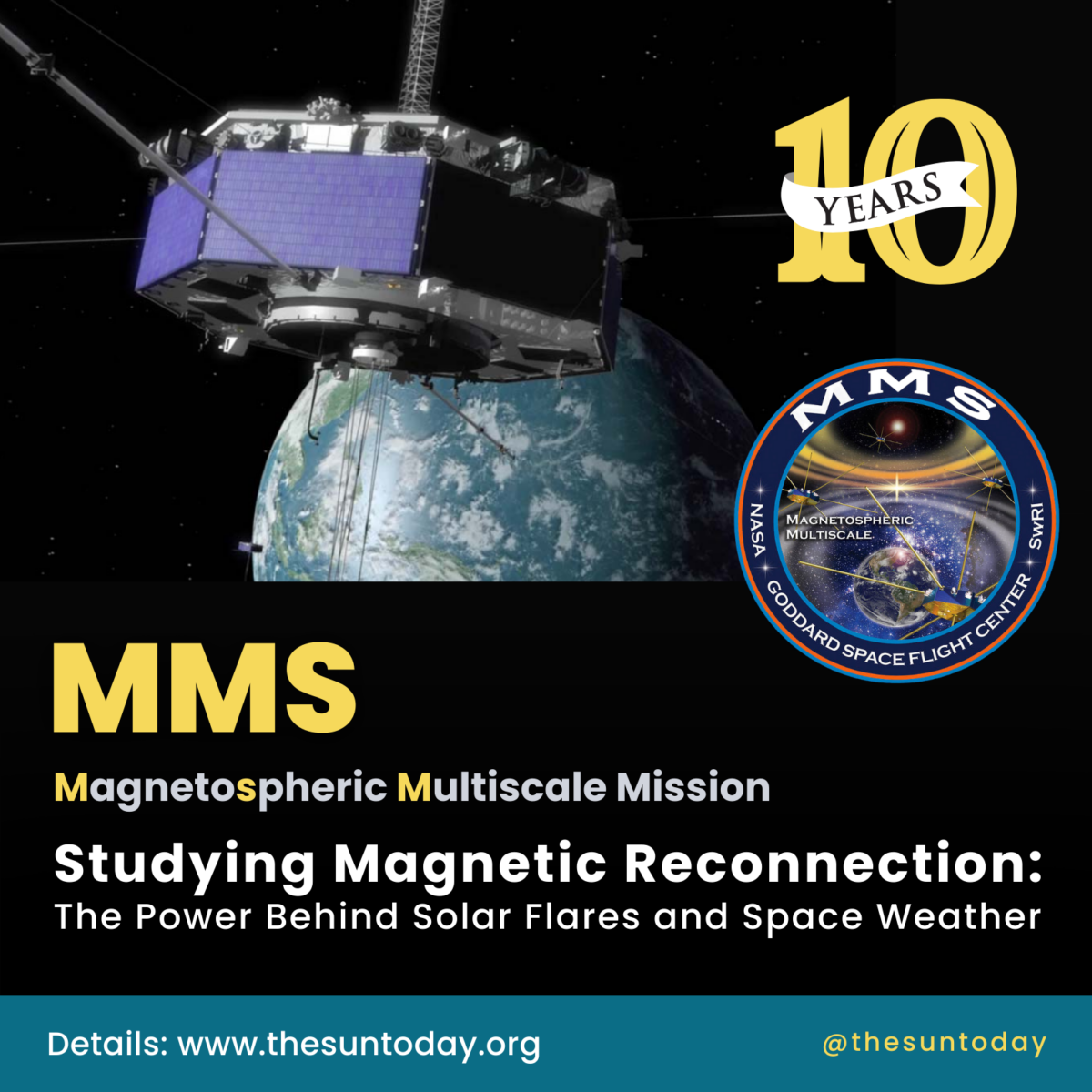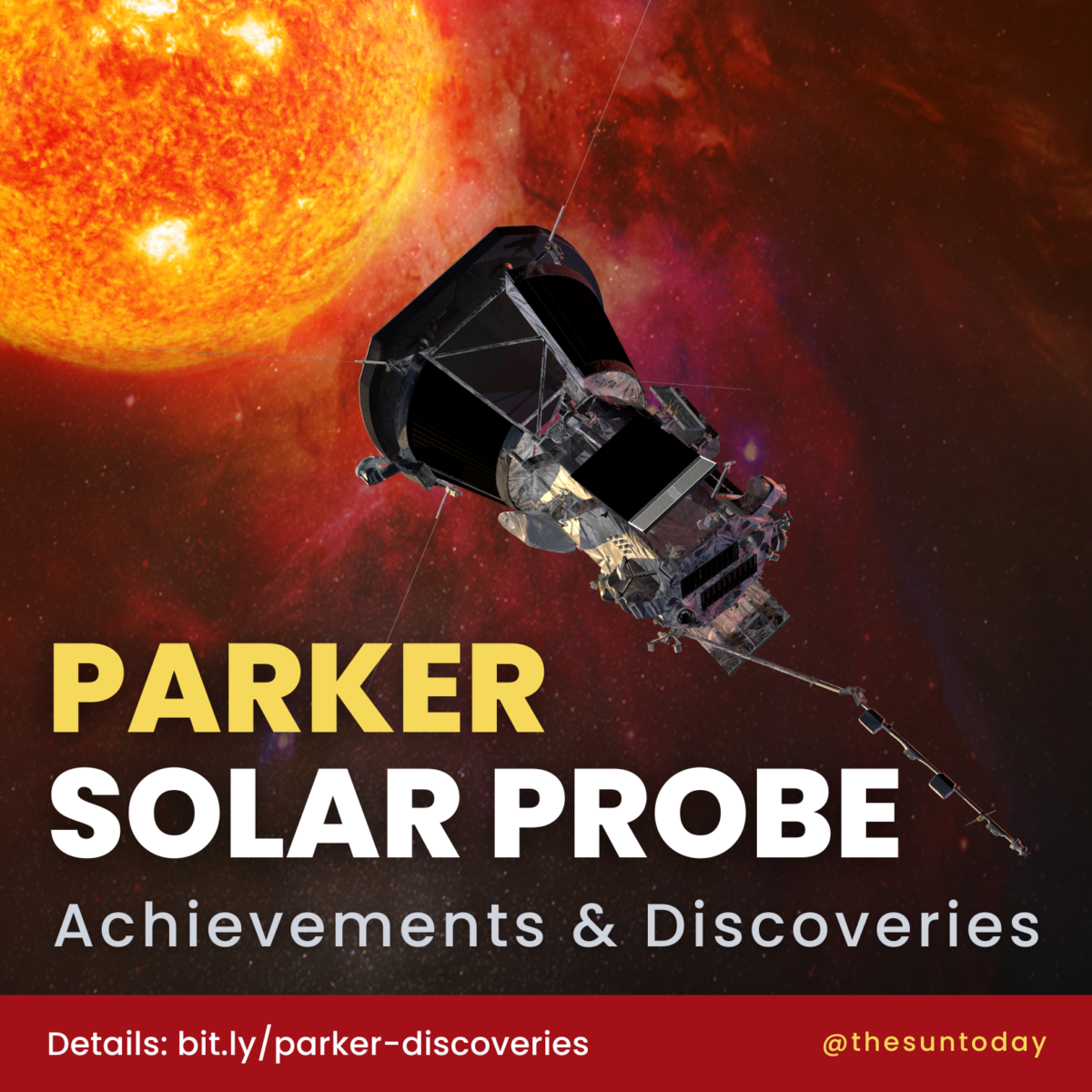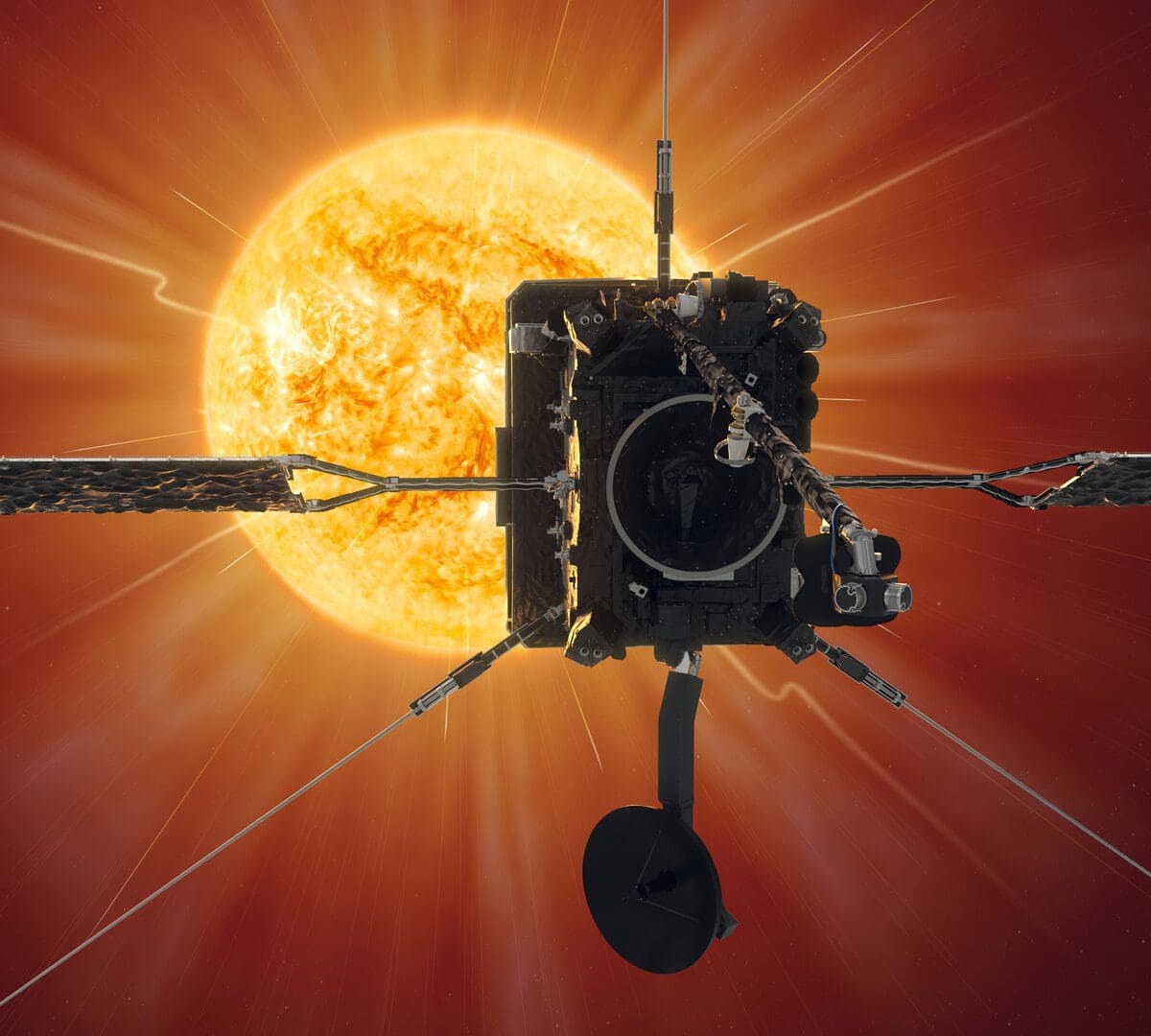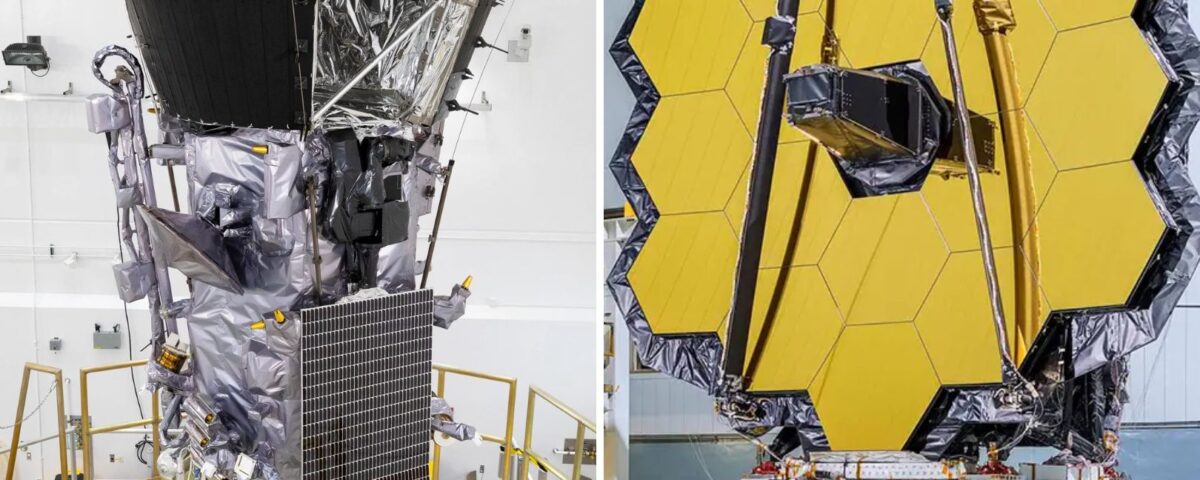
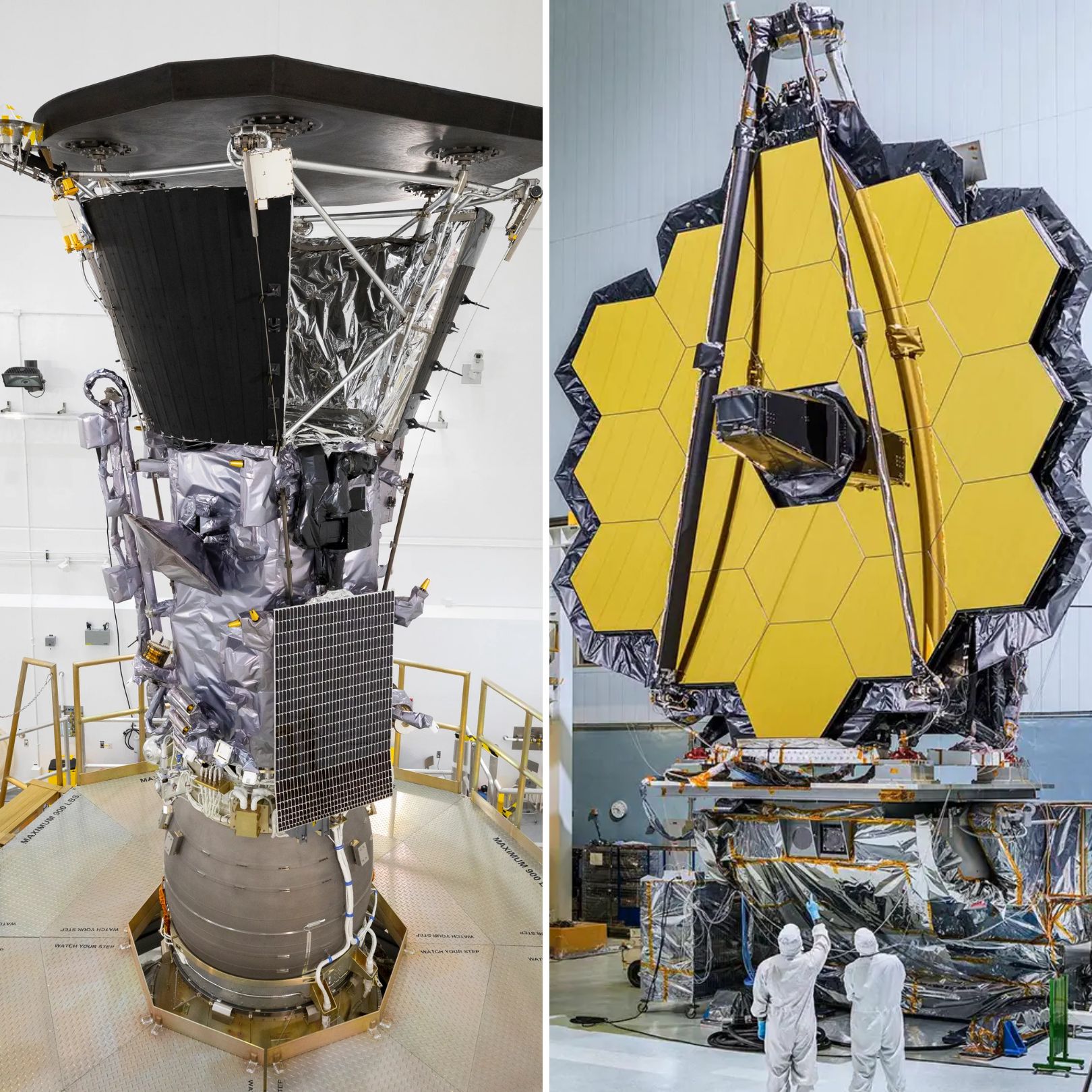
Parker Solar Probe (left) Webb Telescope (right) – Credit: NASA
Parker Solar Probe has now touched the Sun, and is giving humanity the first visit to a star. The James Webb Space Telescope (Webb or JWST) will be looking at the earliest stars.
In between, is the universe we know.
“Near and far” is a basic concept that kids learn. Parker Solar Probe is looking at near! James Webb Space Telescope is looking at far! Here’s Grover with a classic demo of what that means…
NEAR: Parker Solar Probe
Parker is looking at what is happening a mere 7.5 light minutes away. This is the time it takes for light where it is flying to reach Earth.
The Parker Solar Probe team just announced an amazing next step in the understanding of our very own star the Sun. The spacecraft has now flown through the region defining the boundary between the outflowing solar wind and the outermost part of the Sun’s atmosphere, the solar corona.
The corona is the region of the Sun we can see with our eyes from Earth during a total solar eclipse. This part of the Sun’s atmosphere is dominated by its magnetic field and is where the solar activity that creates space weather originates such as solar flares and coronal mass ejections.
Parker Solar Probe is using the sun as a laboratory to understand our star, so we can better learn what goes on in our solar system. Then we can use that knowledge to tell us about other stars and star systems in the universe.
Learn more about Parker Solar Probe »
FAR: James Webb Space Telescope (Webb or JWST)
Soon we will be able to combine our knowledge close by with views of the earliest stars in the universe. The ancestors of the Sun will be made visible by the James Webb Space Telescope.
Webb will peer to near the edge of the visible universe, 13.6 Billion light-years away. These first stars were born only a few 100 million years after the birth of our universe.
-
Webb will be able to see stars that are ten billion times fainter than the faintest stars we can see without a telescope.
-
This is 10 to 100 times fainter than what is seen by the Hubble Space Telescope.
-
The Webb telescope will be able to see the most distant luminous objects in the universe such as stars and galaxies.
Learn more about Webb »
A crazy thing about this is that we are not only looking at stars very far away, but we are also looking back in time!
 At these distances, light takes a long time to reach us. The light Webb sees was created 13.6 billion light-years away meaning it took 13.6 billion years to reach the telescope. The telescope will be like a time machine looking at stars long since dead that existed 13.6 billion years ago. Webb will also be observing the first galaxies that formed.
At these distances, light takes a long time to reach us. The light Webb sees was created 13.6 billion light-years away meaning it took 13.6 billion years to reach the telescope. The telescope will be like a time machine looking at stars long since dead that existed 13.6 billion years ago. Webb will also be observing the first galaxies that formed.
The light that Webb will capture will not be focused on visible light but mostly infrared light. The very universe is expanding so distant objects in the universe are moving away from us. Because the stars and galaxies are moving away from us the light coming from them is shifted to a longer wavelength or red-shifted.
Doppler Effect
These stars are so far away and moving away from us so quickly that UV light from them is shifted to near-infrared and visible light is shifted to infrared. This shifting of the wavelength of light is called the doppler effect.
The same thing happens with sound waves. When a siren comes toward you, the pitch is higher (the wavelength of the sound becomes shorter). When it passes you, the pitch is shifted lower (the wavelength is longer).
For light, shifting to a shorter wavelength is in the direction of blue on the electromagnetic spectrum and shifting to a longer wavelength is in the direction of red on the spectrum. Infrared light is what we feel as heat.
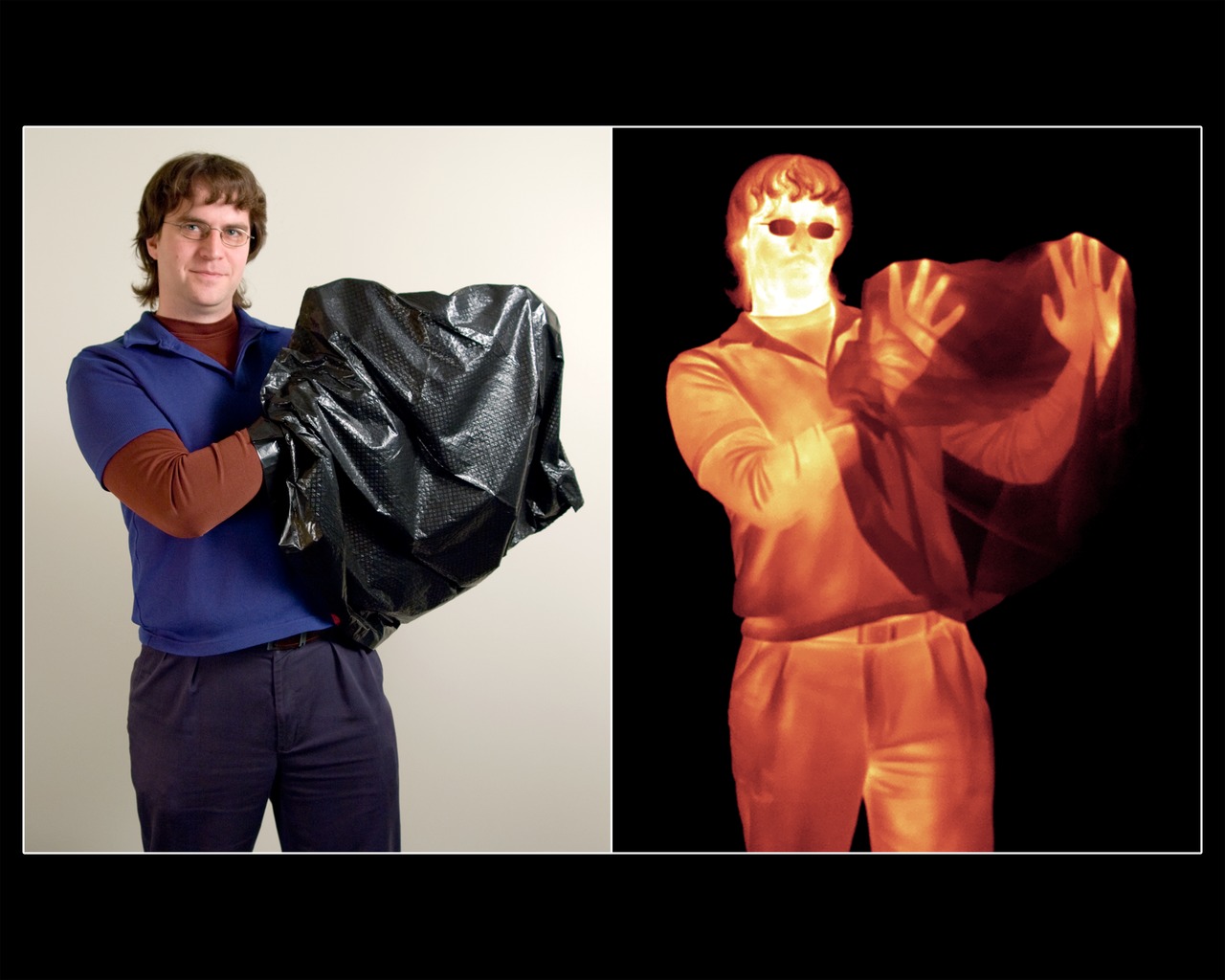
Credit: NASA/JPL-Caltech/R. Hurt (SSC)
Copyright: http://www.spitzer.caltech.edu/Media/mediaimages/copyright.shtml
Infrared light can pass right through objects that stop visible light entirely. In the image on the left, you can’t see the man’s hands at all – the plastic bag stops the visible light from passing through. In the infrared image on the right, shot with a thermal infrared camera sensitive from 7.5-13 microns, the bag seems to disappear, and his hands are visible. But just like infrared light can get through some things that visible light doesn’t, it’s also stopped by some things that let visible light through. Notice the eyeglasses in both images. In infrared light, they’re completely opaque.
These wavelengths of light are measured in microns or millionths of a meter. The wavelength range for the light Webb observes is 0.6 to 28 microns, which goes from the barely visible to invisible infrared. One of the great things about this range of light is that it will allow Webb to peer through regions with a lot of dust. Near-infrared light travels through the dust basically making the dust invisible.
Searching for Planets
Nearby us in our local neighborhood, these dusty regions are where stars form and planets form. Webb will be able to view through dense regions of dust to see stars and planets forming.
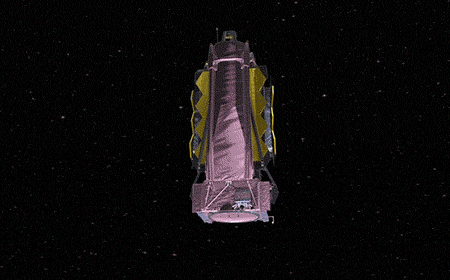
CREDIT: NASA
Using infrared light, Webb will observe individual planets around nearby stars. It can measure the light directly reflected off of large planets, Jupiter-sized. It will be possible to see very young planets that are still hot while they are forming.
The telescope has a coronagraph much like the solar viewing spacecraft like SOHO and STEREO. This blocks out the very bright parent star allowing Webb to make out the faint planets orbiting around it.
One last way Webb will find planets is by looking for planetary transits. As planets move in front of their star, the brightness of the star will decrease slightly. The sensitive Webb telescope can detect this change in light. It will also use its ability to look at the components of light (spectroscopy) to measure certain chemicals in the planet’s atmosphere as the starlight passes through it. This may allow us to see evidence for water in the planet’s atmosphere which is a key component necessary for life as we know it.
This is a view of the transit of Venus in front of the sun in June 2012. This was viewed by the Solar Dynamics Observatory in ultraviolet light. The Webb Telescope will be able to see this happen much farther away across much fainter stars. Learn more about the Transit of Venus »
Parker Solar Probe and the James Webb Space Telescope are two amazing feats of engineering and science. Together they will help scientists to learn more about the full puzzle of our universe from our closest star to the most distant and oldest objects—and the space in between.
Watch the launch of The James Webb Space Telescope, scheduled for Saturday, December 25, 2021, at 7:20 am EST, 4: 20 am PST (12 pm UTC).
Just think about how tired Grover would be if he had to run all the way to what JWST is going to see!




